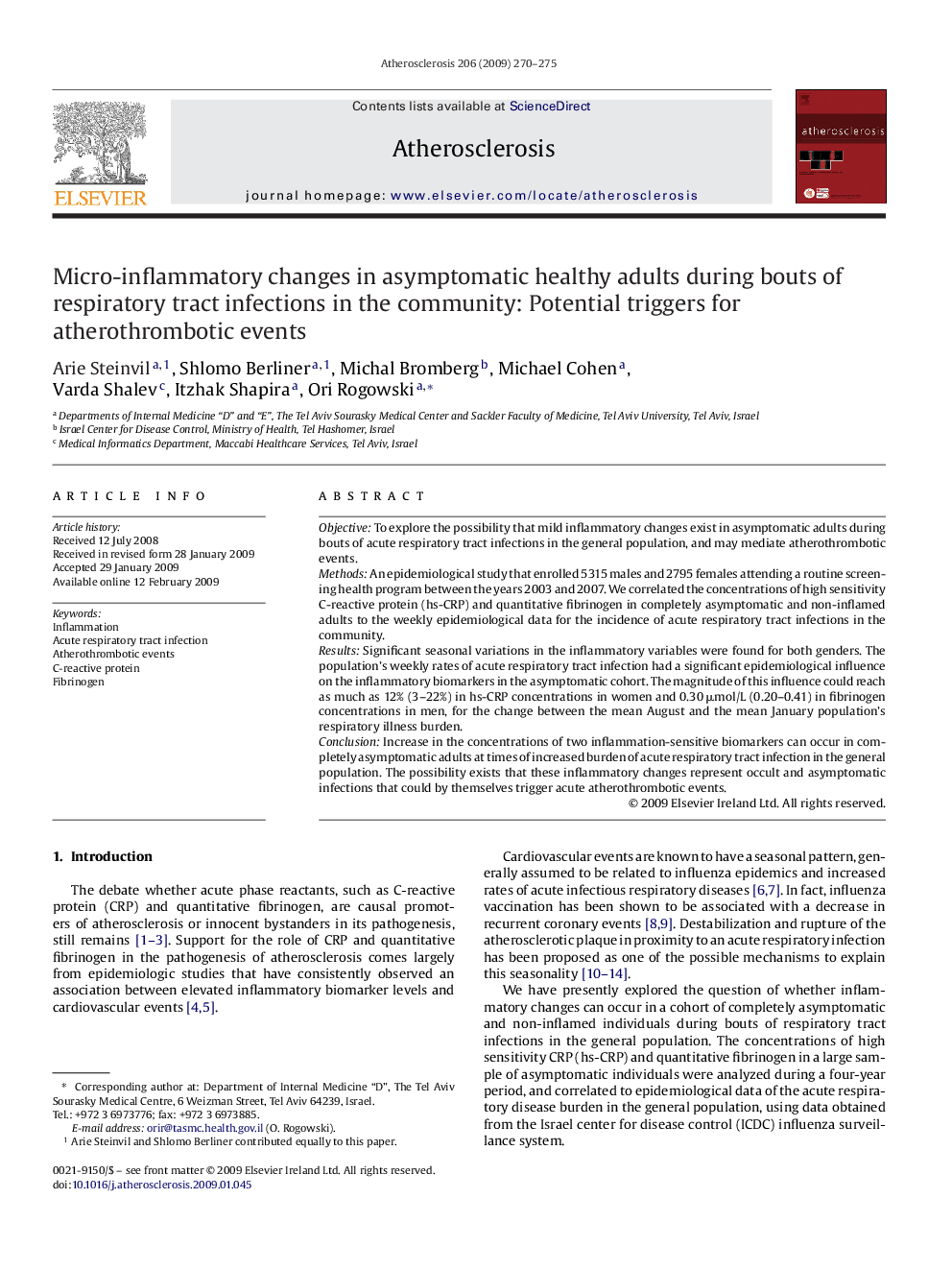| Article ID | Journal | Published Year | Pages | File Type |
|---|---|---|---|---|
| 2893303 | Atherosclerosis | 2009 | 6 Pages |
ObjectiveTo explore the possibility that mild inflammatory changes exist in asymptomatic adults during bouts of acute respiratory tract infections in the general population, and may mediate atherothrombotic events.MethodsAn epidemiological study that enrolled 5315 males and 2795 females attending a routine screening health program between the years 2003 and 2007. We correlated the concentrations of high sensitivity C-reactive protein (hs-CRP) and quantitative fibrinogen in completely asymptomatic and non-inflamed adults to the weekly epidemiological data for the incidence of acute respiratory tract infections in the community.ResultsSignificant seasonal variations in the inflammatory variables were found for both genders. The population's weekly rates of acute respiratory tract infection had a significant epidemiological influence on the inflammatory biomarkers in the asymptomatic cohort. The magnitude of this influence could reach as much as 12% (3–22%) in hs-CRP concentrations in women and 0.30 μmol/L (0.20–0.41) in fibrinogen concentrations in men, for the change between the mean August and the mean January population's respiratory illness burden.ConclusionIncrease in the concentrations of two inflammation-sensitive biomarkers can occur in completely asymptomatic adults at times of increased burden of acute respiratory tract infection in the general population. The possibility exists that these inflammatory changes represent occult and asymptomatic infections that could by themselves trigger acute atherothrombotic events.
